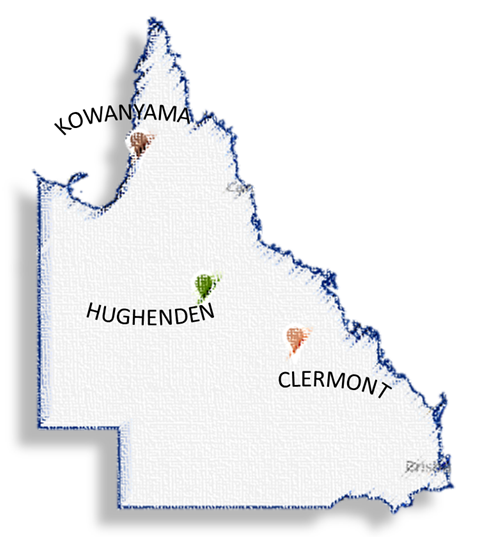Chapter 1: Introduction
The Integrating Health Care Planning for Health and Prosperity in North Queensland project aimed to improve the responsiveness of health services to the health needs of local communities in the Northern Queensland (NQ) region, by undertaking a place-based approach to health planning. Participatory place-based health service planning engages communities in achieving shared understandings and decision-making to co-produce solutions to local issues. It facilitates a locally grounded approach to generate locally relevant and sustainable solutions to health and health service issues with the aim of optimising health service effectiveness and efficiencies.[1] It is distinct from the more widely used population-based and place-focused planning which takes a top-down approach to service adaptation led by individuals or organisations external to the place or community of interest and with minimal community involvement.[2]
The four-year project commenced in April 2021 and was conducted in two phases. In phase 1, the Northern Queensland Health Atlas was developed and piloted to inform planning in the region. This is an online, freely available interactive tool that contains publicly accessible data about demographics, health services and health workforce that can be overlayed to facilitate comparisons and understandings of place. It provides proof of concept that data, that are otherwise difficult to find across a multitude of platforms, can be presented in a single, easily accessible place. Data accessibility challenges have been described elsewhere.[3] A gap analysis provided an initial overview of unmet need in the project region, that is, a general understanding of imbalances between population need and services available.
The Atlas and accompanying gap analysis (discussed in Chapter 2) informed consultations with key project partners and stakeholders to assist in prioritising communities for inclusion in phase two of the project and to trial place-based planning. Additional selection criteria included the desire to engage a diverse mix of communities and geographic regions to maximise learning opportunities. Crucially, the level of interest and willingness of stakeholders within each community to participate in the project confirmed the involvement of the community in the project. Following local engagement and confirmation of interest, three communities progressed into Phase 2: Clermont, Hughenden, and Kowanyama (Figure 1.1). These are all remote or very remote communities (MM6/7) as classified by the Modified Monash Model.[4] More details about each community are presented in community profiles noted in the Resources section below.

A profile for each community was compiled including information that was available on health of the local population and services. These documents are available on the project website:
The development of these guidelines has been shaped by the knowledge and experiences gathered throughout the project. They provide practical information and guidance on participatory place-based health service planning, using a co-design approach, and incorporate key learnings from the project and from approaches that have been developed and tested in other rural and remote areas globally.

- Yeboah, D. A. (2005). A framework for place-based health planning. Australian Health Review, 29(1), 30-36. https://doi.org/10.1071/AH050030 ↵
- Panzera, A. J., Murray, R., Stewart, R., Mills, J., Beaton, N., & Larkins, S. (2016). Regional health workforce planning through action research: Lessons for commissioning health services from a case study in Far North Queensland. Australian Journal of Primary Health, 22(1), 63–68. https://doi.org/10.1071/PY15149 ↵
- Topp, S. M., Thompson, F., Johnston, K., & others. (2023). Democratising data to address health system inequities in Australia. BMJ Global Health, 8, e012094. https://doi.org/10.1136/bmjgh-2023-012094 ↵
- Australian Government, Department of Health, Disability and Ageing. 2025. Modified Monash Model. https://www.health.gov.au/topics/rural-health-workforce/classifications/mmm ↵

